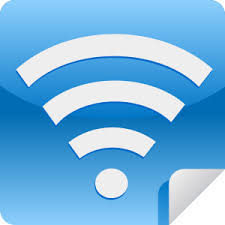With India's 5G spectrum auction postponed till 2021, the commercial availability of the technology is at least 18-20 months away. Is the unlicensed 6GHz band for Wi-Fi the answer for the retail and enterprise markets?

With India's 5G spectrum auction postponed until 2021, the commercial availability of the technology is at least 18-20 months away. Could the unlicensed 6GHz band for Wi-Fi provide a broadband solution for retail and enterprise?
India has been recording a dramatic increase in data consumption over the past few years, and the recent COVID-19 pandemic has added to it.
The demand for residential broadband has gone up because of a spike in working and schooling from home to maintain social distancing.
Businesses are now forced to work online to ensure continuity, accelerating the digitization of small and midsized enterprises. But India's broadband deployment and capacity is not uniform across the country, and there is a need to improve it in many regions.
This means telcos need an alternative to meet the growing demand for high-speed connectivity. An increasing number of people believe that with 5G some time away, Wi-Fi 6 can help plug the gap.
The latest version of the technology uses the 6GHz spectrum and is much faster, with capacity for higher number of users and things. It is often compared to 5G, because Wi-Fi 6 offers similar speeds and lower latency.
Wi-Fi 6 also includes beamforming capability, to address dead zones in buildings. With orthogonal frequency-division multiple access (OFDMA) modulation comes enhanced capacity and improved traffic management.
In many ways, Wi-Fi 6 has been developed for goals similar to that of 5G – large-scale IoT implementation and enhanced customer experience through new use cases. It comes with WPA – 3 security protocol, making it more robust and apt for enterprise usage.
Want to know more about 5G? Check out our dedicated 5G content channel here on Light Reading.
But above all, it is better value than 5G where macro coverage isn't needed, for example in-building, sports arena or factory requirements.
This is mainly because, like previous Wi-Fi standards, it uses unlicensed spectrum. For 5G, service providers will need to spend a massive amount on spectrum acquisition and license fees.
For 5G specific use cases (particular for macro mobility), it can complement Wi-Fi 6 as and when deployed.
All this makes the technology highly suited for India to achieve many of objectives relating to "Digital India," an ambitious initiative launched by the government to enhance Internet connectivity to "transform India into a digitally empowered society and knowledge economy." Of a population of around 1.3 billion, nearly half is yet to be connected to broadband.
"There is a lot of hype around 5G. Business cases for many much talked [about] 5G use cases are yet to reach a credibility point. Monetization of telco 5G networks will not be easy in the short term (next two years or so), and therefore, there is no need to wait for 5G India's digital enterprise requirements," says Amresh Nandan, vice president of research at Gartner.
"If you analyze, you will realize that the combination of present-day technologies is good to serve the majority of India's needs. The telcos must focus on strengthening the existing networks."
"The appeal of Wi-Fi 6 is that it enables the service providers to offer high-speed Internet connectivity at economical rates, with the possibility to complement it with 5G later. This makes it better suited for India's needs, especially in IoT and enterprise segments.”
There is a push from Indian authorities to use Wi-Fi to bridge the digital divide. About two years ago, the government freed up more spectrum in the 5GHz frequency band from licensing for Wi-Fi services. It had set a target of one million W-iFi access points by the end of 2019.
Currently, government-owned organizations Bharat Broadband Network Limited and Bharat Sanchar Nigam Limited (BSNL) have the highest number of Wi-Fi hotspots in the country.
"The 6GHz spectrum band, if de-licensed, as in the US, would be a great boon to cater to increased data traffic and will help augment the indoor penetration requirements through Wi-Fi," said TV Ramachandran, president of the Broadband India Forum, at a recent virtual event.
A significant challenge remains in the high cost of Wi-Fi 6 routers, which threatens to limit adoption. It is hoped the government may step in to bring down the price.
Related posts:
— Gagandeep Kaur, contributing editor, special to Light Reading
About the Author(s)
You May Also Like











